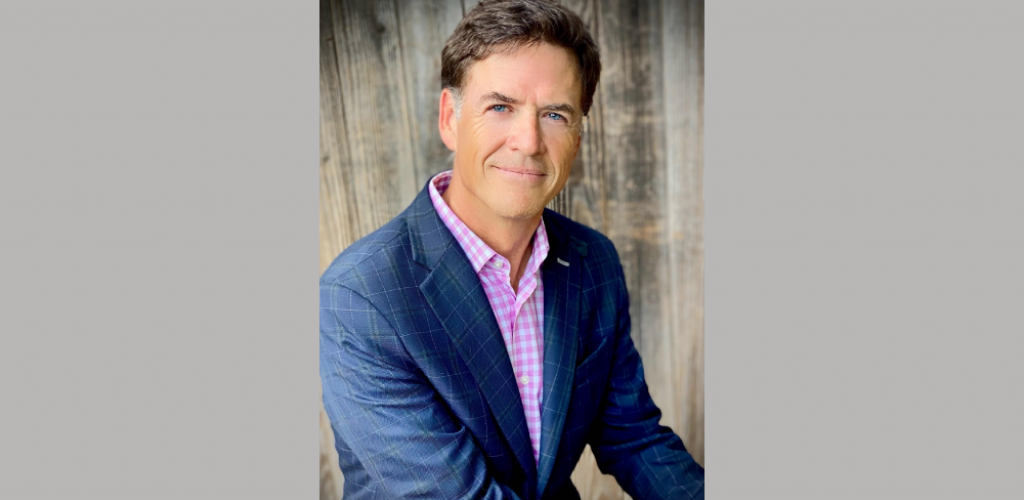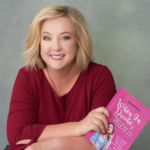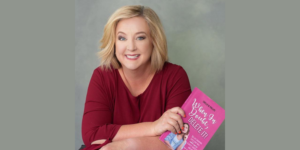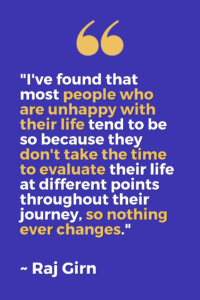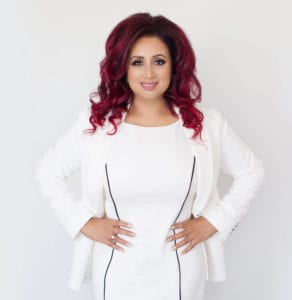Raj Girn: My guest is the co-founder and CEO of the ‘National Business Post,’ Lyle Laver, who is also a thought leader in this space.
This is Part Two of our conversation:
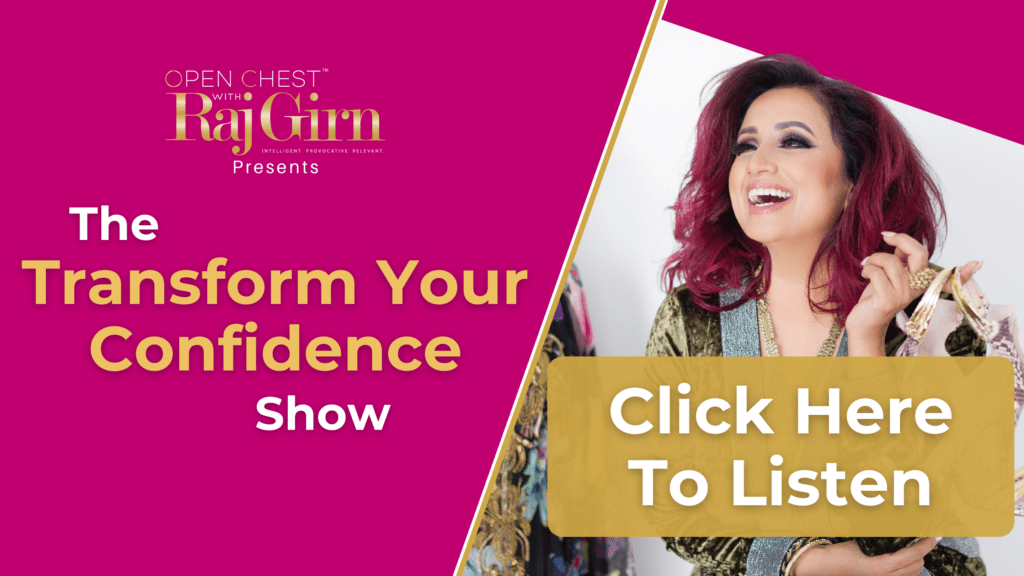
Raj Grin: You could have a respectable budget to go to market but if you don’t know what that story is, that is your lived experience as well as your expertise and what you’re bringing to the table and to whom you’re bringing that to, going to market is not something you should be doing first. It’s understanding what your brand story is and who that speaks to and what is the business opportunity for you in regards to that. So I want to ask you this question. The leverage ability of earned media is greater than any other form of media when it comes to authority building specifically. So if a brand is looking to go down this path, what do they need to know?
Lyle Laver: The path of paid media?
The path of earned media, because that’s how you create authority, right? Is to earn your media.
Yeah, so, and we’ll touch on this, within earned media. It’s within the word: earned. So the first thing I would say is research, research, research. And what I mean by that is not only do you have to research. When you’re trying to get earned media, this is earned, you’re going to put together a press release. That is going to be specific to the brand category, that highlights research, that shows the societal trends today as it applies to your brand. That’s part of the research. The second research is you have to research who are you pitching this to? So you have to know, okay, I want to go to ‘Vogue.’ I need to know that editor and that editor loves corduroy. She loves corduroy with like these straight orange with the black and a little purple. Like she loves that. So if you research the editor that you’re trying to reach, you have to take the social trends, the statistics as it applies to your brand, presenting your brand and then weave it where you’re going to be applicable to the individual who’s going to read this. And I think those things are really important. So you have to research that.
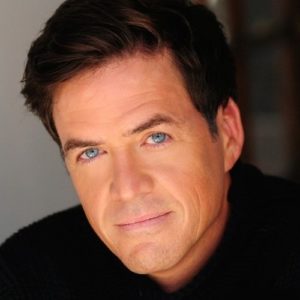
The second thing is you have to know the audience, as we’ve talked about before, that media placement and maybe it is ‘Vogue.’ So you just have to know what they’re looking for. You may say it’s a female who’s 18-24 and lives in Toronto or lives in New York or lives in Vancouver. And then the last thing I would say is in getting that earned media, I always say, you keep it simple. So you’re going to have to write a headline and a sub headline that is going to pull on the ear of that editor in that way that you researched what is trendsetting today or what the statistics were. Like for example, I could think, well, if I had a soap company. And we’re in the middle of COVID, maybe an organic soap company, and you may have done all the research to find out that, well, that’s why we became organic, was because we came to find out that there’s a lot of chemicals in liquid soap or regular soap that are really harmful and that the skin is really porous. But I do need to tell people about soap and I want to bend the ear. You may write a headline that’s kind of, whether it’s targeting Covid, or you may want to target a headline that explains that soap used to run a dirty campaign. I don’t know whatever that is. So, yeah. So those things I think are important in order to find that earned media, because within earned media, you have to understand. Their business model is to attract today’s reader, viewer, listener. So those things are important in the earned media space.
So now let’s go to paid media, Lyle. Paid media is best suited to soliciting clients, and that is hands down, which is why content marketing has become the Holy Grail in that space. It’s the standard bearer to the success of soliciting clients today, because based off of a lot of what you’ve been talking about, creating authenticity to your lived experience that speaks to a specific niche is what you need to first do. When you’re looking at paid media there’s no difference. Putting out an ad today is not the same as it used to be. If there isn’t a story associated with that, you kind of get lost in the mix because people are looking even at advertising to be humanized. And we’ve touched upon that as well. Can you shed some light on why this is the case? Because a lot of people still who do paid media are doing it based on a lot of the old ways of doing it, which are inauthentic to kind of the humanizing of the story. So I’d love for you to shed some light from your experience on the content marketing piece.
“Creating authenticity to your lived experience that speaks to a specific niche is what you need to first do when you’re looking at paid media.” ~Raj Girn
Sure. I think what was really interesting, which I’ll certainly talk about, is it’s still an education process. We are still in the transitional phase for understanding an attention economy, what I call an attention economy, to moving into this research economy. And what I mean by that is that when you start a brand you are close to the product. You’re going to bring this to market and there are many different platforms. But I’m going to go back to that which I know most. I’m going to go back to “oh, yeah, everybody’s advertising. I guess that’s what I’ll do.” And then if you talk to somebody about content marketing, they’re like, “oh, yeah, I’ve heard about that. Is it sponsored content?” So it’s still an education process.
But I think the interesting thing about paid media as a platform in a digital space is that, I always say from the Post, because we also had another story coming out, this was also coming out of Austin, Texas, at one point. And this story, the journalist was like, this person wanted to do acts and then they sent us the story and we’re reading it and it became a pitch. And for the Post, we don’t pitch. That’s the old adage. This is about this person really probably has an interesting story why he wanted to do this. And so as we began to work with the journalists, we were able to pull the story out of it. But I would just say this, is that, you know . . . I say that because at the Post, I always say we write from the outside in. The beauty of having a tenured journalist call you sit with you for 60 minutes or 90 minutes there on the outside of your brand. They don’t know anything about your brand, why you got started, what it is, what are some of the . . . And they, from a human standpoint, will be able to ask the layman questions and within that, pull out the story that comes with it. And within the story comes out the keywords authentically, the key phrases, all of it comes out within a 90 minute interview.
So we right from the outside in. We just did another piece for a company here in Los Angeles, actually, that writes kind of trade publication papers for people that are of specialized industry, whether doctors or engineers that are trying to come into the U.S.. And it was the same sort of thing, is they began, they said, “okay, don’t worry, we have a journalist on staff, we’ll have them write the piece.” I said, “okay, we’ll do know that once it comes to our editors, we’ll look it over. And our editors do have the last say.” But it’s always an education process because when you write from the inside out, you will write in a way that’s going to push you to buy. And we have to remember that we’re trying to pull the consumer to the brand. So when you write from the outside in its objective, when you write from the inside out, it becomes subjective. So I think that is really an interesting thing today, that you have the ability to sit with a journalist for a 90 minute interview that’s outside of your brand and is going to pull out the information that really you may have bypassed, you may have gone, “okay, I was in a car.” I mean, you know, whatever it was.
“When you write from the outside in, it’s objective, when you write from the inside out, it becomes subjective. So I think that is really an interesting thing today, that you have the ability to sit with a journalist for a 90 minute interview that’s outside of your brand and is going to pull out the information that really you may have bypassed.” ~Lyle Laver
But the average reader today, who may only take 30 to 50 seconds to skim an article that’s two thousand words when they see something that’s compelling, they stop they’ll read through it quickly. It’s like doing a history paper. I mean, they’ll read the stuff that makes sense. So I think in paid media, we have the ability, as you had said, to control the narrative. I always say look like ‘Vogue’ or ‘Vanity Fair,’ may be doing a great story on Johnny Depp. They may want to do a great story and Johnny Depp, but they’re going to do a story that’s going to make that cover story, pull a consumer in to buy the magazine. And what happens is in those cases, when those earned media platforms write these stories, they don’t let the client see the final story. And that’s in earned media because they have to use the business model to make it sensational within the paid media model.
The first thing we do is we interview you for 90 minutes. We pull all the information out. The writer writes the story, the editor goes through it. And then the first person to see it for focus and fact is you, the brand. So you go, “Oh, yeah, that’s interesting. Yeah, that’s great. Can we also talk about.” And then we all get together. Yes we do. But it’s not promotional. And so I think in the paid media scope you get to tell your story, but it’s from the outside looking in instead of from the inside out. And I think, as I say with the Johnny Depp article in ‘Vanity Fair’ for example, if we put an art journalist on him, it may be he wants to have a story written and the journalist follows him for two weeks. But it’ll be, from Johnny Depp’s perspective, going well, that’s where he spends his day different. So I think those are really interesting things that you have the ability to have input in paid media today, the ability to tell your story, control your narrative and and be able to have a journalist pull that out and write it.
Absolutely. So, folks, I hope that you have garnered the magic from the conversation so far. This last little bit that Lyle was talking about, I feel is very key for you to understand. And I get this all the time with my clients. They’re like, “Oh, but I want the media because that means that I didn’t pay for it.” But a lot of people don’t understand is someone is getting paid somewhere along the line regardless. Either you are paying the media to write the story to your narrative or you’re paying a publicist who has a relationship with somebody that is writing the story. So either way, someone is getting paid to write that story. So you have to decide what works for you from that perspective.
“Either you are paying the media to write the story to your narrative or you’re paying a publicist who has a relationship with somebody that is writing the story. So either way, someone is getting paid to write that story. So you have to decide what works for you from that perspective.” ~Raj Girn
My personal perspective on this that I want to share with everyone and that I share very transparently with all of my clients is I feel you need a bit of both. I feel that you do need to have the opportunity to have a media platform that is experienced in storytelling to tell the story from your narrative. And I do believe that you do need the authority building by association earned media piece too. I don’t think one without the other today is necessarily telling the full picture of your brand. I’d love your thoughts on that, Lyle.
I think what’s really interesting, as I was saying, you never know who reads an article. A lot of times people think when we do an article that it’s going to be a general consumer who will read it. But we’ve actually had journalists read the articles. I think that’s what’s really interesting because you never know who’s researching a certain piece. And so we automatically think, “Oh, you know, your market.” No you never know who’s researching the piece for what reason. And so you may have actually someone within media who picks up on an article from another media piece and goes, well, the Post covered that. And then they’re using the piece to kind of start that that conversation with the brand. So I think that’s really interesting.
Absolutely. So let me ask you this so we can kind of wrap up this whole idea of storytelling. All media, regardless of type, relies on storytelling, short, medium, long form, audio, visual, written. I want to ask you this. Just to encapsulate it for everyone out there, what ingredients make for a compelling story today, Lyle? I feel that you’ve already answered this question, but to encapsulate it for everyone, if you could do that, that would be really great.
I think the most important ingredient to make something compelling is to make it as unique to you. I often tell clients, especially in a textual process, such as writing a story, the beauty of this is the coattail, right? Is writing a story. We submit it. We post it online. And within a week that post is meta tagged through Google for the next eight or 10 years. You were asking me earlier about starting the Post. Well I have twin boys. And those twin boys several years ago, through their school, started researching their dad. You know, they put in the name and all of a sudden articles from years ago in the ‘L.A. Times’ and ‘ABC News’ would come up on my profession. And they said, “Wow, dad.” And all of a sudden for me, that was really what clicked.
Most people think that I’m going to pay for paid media. See, we actually hired somebody in a previous position. We had hired someone to work with our platform and it was in publishing. And this girl, she’d come out of journalism school and she had said, “Wow, it’s so good to be back in print.” At that point, print. And I said, “Why is that?” She goes, “Well, do you know where I was. I was actually an account manager for a social media company. And these brands paid a lot of money to us to put our stuff up on Instagram. But I had to do the cleanup and we called it the shooting star syndrome.” So as soon as it’d go up, and that was it, and people be like, well, what happened? Well, it went up, but it’s gone. Like as soon as it goes up it’s gone, because we’re consumed with so much media. The beauty about doing a paid media platform like the Post once the story is written, and I’m a testament to it. When ABC News did the story on me when L.A. Times did a story on me that might have been 15 years ago. That still is tied with keywords and key phrases and attached to you and to your brand for a long, long time.
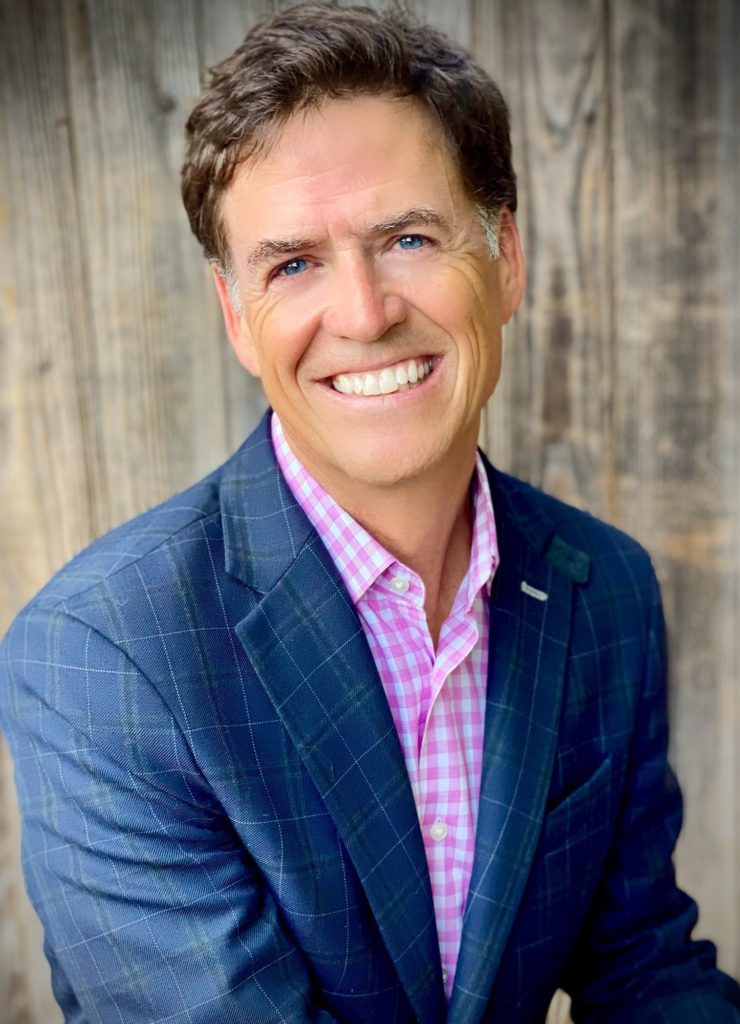
So, within the paid media realm to be as authentic as possible when you are going to write about your story, your feature, this is your feature to be authentic because that in today’s world is credible. And today people are making brand choices, the smallest of brands for the most unique stories, the handcrafted pieces that, if they’re true, become compelling. And within that, today, it is all about brand champions. This is not about mass market. This is about finding finding someone who really finds what you do interesting. And the only way you’re going to do that is you have to tell your story. And within that story comes the keywords, the key phrases, and then they will begin to pass on that story just like they read a book. They’ll come home and they’ll say, “You know, I just read this interesting article about this, and this is what they do.” And that will become the initial process of the awareness for the brand. And then within that article, as I’ve said, keywords, key phrases authentically there, this is all part of a Google algorithm that will only help index you. Then you’re ahead as people research in that vertical of which your brand might be a part of.
And you touched upon something that I think is so crucial for people to understand. You don’t exist unless you can be found. And this is a big part of the alt tags from the power of Google, et cetera. I want to ask you, we’ve talked a lot about authenticity and we talked about storytelling. I want to ask you one other piece here to create the full picture of really what the power of media is, irrespective of what platform you’re on and irrespective of whether it’s earned or paid. Why is it important to humanize a brand, even if it’s a product versus a service? Touch base on that for me Lyle.
So I know it’s probably going to be a very simple answer, but the fact is, is that the thing that separates us from all other inanimate objects and all other living things is are emotion. As we swing in this technological age, everything is going to an algorithm. Put it this way many years ago, I’m going to say at least five years ago, I had a trip to Ottawa where I’m originally from, and we had a big discussion as far as robots and some of these technological aspects of our society that are truly awful, like automobiles that are there on auto drive. I mean, there’s algorithms that are making choices as we move. There’s a pendulum even as we push in technology. The other pendulum, the swings back, it just goes like this because we want to be more human. We actually want to feel more. We actually want to be, especially in this day and age, with people. We want to know that we are not isolated, that we’re actually a part of them. And so those human stories, those are the pieces. And Hollywood’s been doing it for years. There’s an emotion. There is a feeling that’s what we relate to.
I’ll give you a quick example. A former client of mine and is probably one of the largest real estate individuals in the country. Long story short is. I never knew that she was a part of the arts until she told me, I never knew that that was something she valued, because when you see a picture or a media platform, which is your regular advertising placement, a display ad, that doesn’t say who she is. The thing within paid media is you can create this two or three dimensional platform to allow an open space, so you are humanly accepted based on the values of your brand and what they are, what you stand for or what you don’t stand for. And I think that’s where people today, they want to feel connected. They want to feel connected to who they engage with, the products they are about and the brands that they’re a part of. And that’s meaning to them. And I think it’s only going to become stronger in the days ahead. So I think that that’s where the human touch within any storytelling is really, really important because there’s many platforms that can do reviews. There’s many platforms that can present pictures. You’re supposed to look like this. These are filters that make you look like this, but within a human authentic story . . . That’s why good books are good books. That’s why good movies are good movies, because they have that human emotion to them.
“The thing within paid media is you can create this two or three dimensional platform to allow an open space, so you are humanly accepted based on the values of your brand and what they are, what you stand for or what you don’t stand for. And I think that’s where people today, they want to feel connected.” ~Lyle Laver
Right. And so what do you foresee as the media landscape in the future based on all of this that you feel should be on all brands radar right now?
I think where we’re going is, I think we’re going to become more virtual. I think there are many platforms that are virtual platforms, and I hate to bring it up because I’m not a big fan of it with my children, is the gaming integration. That is going to be a huge platform, an opportunity. Where you end up in these environments that are integrated. So it’s a certain environment that you may value that has a brand that then you’ll go . . . I mean, it might not be me, it might be a 12 year old, it might be a 20 year old, that they value that environment and a brand integrated within that platform will be of relevance to them. So they become more virtual. And I think we’re going to continue to find these trusted content platforms. I talked with quite a big tech guy here not so long ago, and he said the nice thing about what you do is you’re not just writing content, you’re not just developing content for clients across the country. You actually have a branded, trusted platform. And I think those types of platforms, when they become valued, I always say to people with our stories, we want to be aspirational. We want to go where other media hasn’t gone.
The CBC is such a wonderful platform to offer the variety of culture that is endeavored within the Canadian history. You know picture, which . . . And Toronto is such a great diverse platform itself. But I’m just saying within the CBC . . . So I guess that being for me, I’ve always looked to develop compelling content that creates more of an aspiration and aspirational aspect, because there’s so much media today that unfortunately the only way to get attention is through certain emotions, like a car accident you don’t look at. And there’s certain social media platforms that are aspirational. I mean, a lot of the social media platforms do that. But I always say within our storytelling, we always want to be aspirational. We did a story about a gentleman who is a former Bay Area developer who had a life changing event and ended up sailing around the world, right now off the coast of Spain. He writes an article called Finding Grateful because when he found his sailboat, it’s a 50 foot Beneteau, it was named grateful. But after all you’ve been through, it was a redemptive quality to go, “wow.” And I think within those stories, that’s what people get. That’s what I would like to give to a brand, is so that people feel what it can add, because when you engage in a brand, you want to make sure that adds to who you are, not going away. So I think that’s really important.
Absolutely. So if anybody wants to tap into the opportunity of the ‘National Business Post’ community, where do they need to go to be able to find out more?
So if you go to nationalbusinesspost.com, we’re online with Facebook, Instagram and Twitter @NBP. Now, you can follow us as we push out all our stories through those platforms. Certainly we’re with LinkedIn as we push out our platforms. So, at any point in time, certainly through any of that, certainly to reach out to our staff, we’d be more than happy to to speak to to brands that are that are interested in telling their story. Because, as I say, I think going forward with a lot of these platforms, which you’ll see it’s all about being specific, being unique and content today is King.
Absolutely. So let me ask you this then. For anyone that is curious, the ‘National Business Post’ offerings, can you give us some insights so that people know what are the opportunities within the portfolio of your community that people can tap into if they have a brand and they want to get their authentic narrative out there?
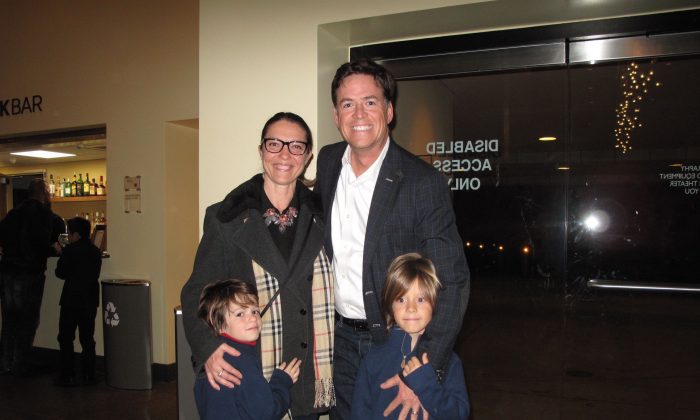
So there’s several different ways we do. Obviously, as we’ve spoken about editorial features, these are full length journalistic editorial written out features that are 2000 words, usually 1800-2500 words. But we also have done podcasts with brands. We work with individuals to be able to do podcasts. We’ve done videos and we also work with CEOs and a lot of C-level executives directly because we have an email list. So these are all different ways because we always put out a monthly email just to kind of push out some of the stories that we’ve been covering and talk to people about what we’re doing presently and in the future. You know, there are many different areas that we’re going to develop. Certainly with COVID it’s pushed us back a little bit. But to get into more live interaction so you can actually get involved in the network because, within a business environment, we all want to certainly network, but we want to do it in a space that is of value to us or they think that brings value. So some of those live experiences will come up in the future.
Absolutely. Guys, I have been in conversation with the fabulous Lyle Laver. We have really touched base on a lot of the things that my clients ask all the time in terms of media. Oftentimes a lot of clients don’t understand truly how powerful media strategy is. And if you’re one of those brands, I know that today was an eye opener for you. Lyle has really broken down in minutia detail, truly what authenticity is. What you’re telling, the narrative from your perspective, is the difference between paid and earned media. How do you build authority through association with the media out there that people revere and what the opportunity is for paid media that you don’t really get an earned media and why it’s important that your media strategy incorporates and encapsulates all of the above towards your end. I really hope that this has been a really interesting and insightful conversation for you as it has for me. Lyle, let’s do this again and tap into maybe a specific deep dive of one of these areas that we’ve touched upon today. Thank you so much for being on the show.
Well, thank you so much for having me. It’s been a real pleasure and I look forward to doing it again.
Absolutely.
Thank you so much for hanging out with Lyle and I today, folks. I really hope that you got some real value from our discussion and that you understand the importance of being intentional with your media strategy by incorporating a customized approach of finding the best tools and resources for your intended goal.
For more trainings like this, please subscribe as usual to the YouTube channel, ‘The Open Chest Confidence Academy.’ On podcast platforms, also, search ‘The Transform Your Confidence Show.’ And I also encourage you guys to hop onto our website and go to TheOpenChestConfidenceAcademy.com/newsletter because we also drop a weekly newsletter. And for those of you that are looking for some kind of virtual assistance for me, directly join our free professional development incubator on Facebook at Transform Your Confidence.
And if you want to know a little bit more about Lyle and the services that his community offer, you heard it right here. Go see what he’s up to. Go have that conversation because having a conversation is free, but it could change the game for your brand.
This is Raj Girn, the founder of TheOpenChestConfidenceAcademy.com. Take care of yourselves, guys, and I’ll see you next week.


